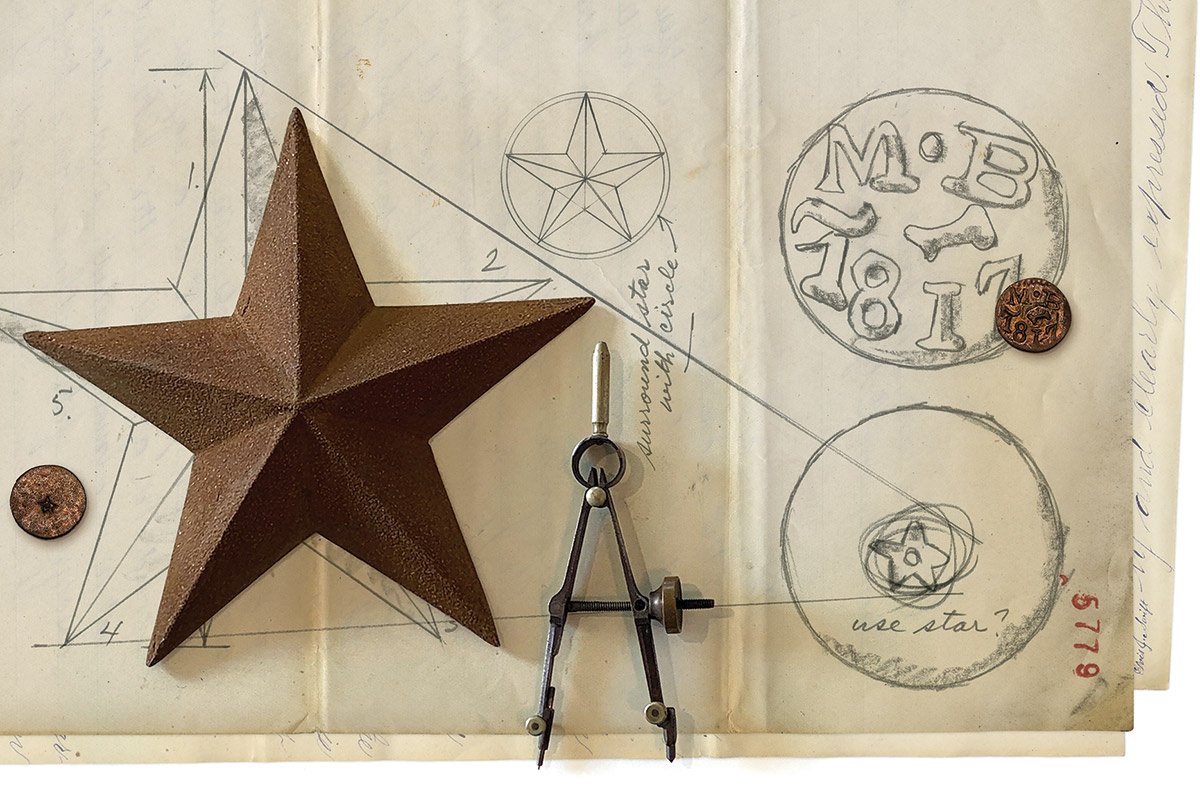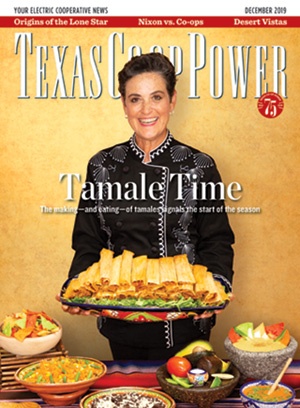A lone star adorns the Texas state flag and the state seal. It appears on the U.S. Mint’s Texas commemorative quarter, and it is the state’s official gemstone cut. Texas is the Lone Star State because we Texans are proud of our beginnings as an independent republic. According to history and mythology, nothing symbolizes Texas’ spirit more eloquently than a lone five-pointed star.
But who first came up with the idea of the lone star, and who was the first person to use the lone star as a symbol of Texas?
A lone star showed up as a symbol of Texas as early as 1819 on the flag of the ill-fated Long Expedition, an early attempt by Anglo Americans, led by James Long, to wrest control of Texas from Spain. That flag, believed to be the first Texas flag to feature a single star, incorporated 13 alternating red and white stripes with a single white star in the upper left corner. Eli Harris, a frontier Texas printer and a leader of the Long Expedition, believed he invented the symbol and wrote to Texas President Mirabeau Lamar to that effect in 1841. “I established the flag which you now use,” he wrote. “I was proud of being the man to establish the star and flag of Texas.”
George Childress, author of the Texas Declaration of Independence, adopted a resolution at the general convention of the provisional government in 1836 resolving that “a single star of five points, either of gold or silver, be adopted as the peculiar emblem of this republic.” The Texas Congress officially adopted the current lone star flag on January 25, 1839.
According to Houston numismatist James Bevill, the lone star—five-pointed with a dot in the middle—originated with an obscure San Antonio minter in 1817 when the central government in Mexico authorized a series of coins to be minted in San Antonio for local use.
In his 2009 book, Paper Republic: The Struggle for Money, Credit and Independence in the Republic of Texas, Bevill wrote that the star on the reverse side of the humble jola “brings us back to the very essence of Texas symbolism.” (Jola is Spanish slang for a coin of small denomination.)
Acting Spanish Gov. Manuel Pardo received authorization from Mexico City to strike small copper coins for San Antonio (then known as San Fernando de Bexar) and selected Manuel Barrera, a local merchant and administrator, to produce 8,000 jolas. These were worth ½ real, which would be about a nickel today. The copper jolas measured 15–20 millimeters in diameter with the minter’s initials and “½” on the obverse, or front of the coin. On the reverse was a five-pointed star with a raised dot in the center.
“It’s hard to say where the influence for a lone star came from,” Bevill says. “These were Spanish coins, after all. We don’t know if the design was done by Barrera or his helper or maybe the alcalde. But that was the first time the lone star representing what is today Texas first appeared.”
The Mexican government withdrew Barrera’s authority to mint the coins after about 20 months, possibly because minting coins in 1817 was difficult and the volume required presented a challenge. Barrera would have been using a steel die, or mold, to strike an imprint on the blank copper planchet (metal disc from which coins are made) with a hammer. The authority to mint the coins went to José Antonio de la Garza in 1818.
No records confirm how many jolas Barrera and Garza actually minted, but only nine of the crude coins survived. A collector found five of the nine 1817 jolas in 2004 in a coin shop.
The 1817 jolas preceded the Long Expedition by two years and the Texas revolution by almost two decades. So what did the lone star flag and emblem represent before it represented Texas as an independent republic?
According to Alamo historian and curator Bruce Winders, in vexillology—the study of flags—stars traditionally represented kingdoms or sovereigns until the end of the 18th century, when the star became a symbol of republican ideology and thus a good fit for the fledgling Texas government.
But, Winders noted, before Texas was the Lone Star State, it shared a flag—and a star—with the Mexican province of Coahuila. That flag was green, white and red with two gold stars in the middle of a white stripe.
“Prior to the Texas revolution, the Texas star flew alongside the star of Coahuila because Texas lacked a sufficient population for separate statehood as established by the Constitution of 1824,” Winders wrote in an email. “Officials designated it the Department of Texas and attached it to Coahuila for purposes of governance.”
Bevill says the lone star on the jolas might have carried the same symbolism as the flag. “There were Americans in San Antonio de Bexar who thought of Texas as having a separate identity from Mexico,” he explained.
The idea of a Lone Star State might have been a case of Eli Harris and George Childress thinking alike, but Bevill’s research makes it clear that the 1817 and 1818 coins with the five-pointed star and the distinctive raised dot in the middle created the first imprint of a lone star on Texas, the country and the world.
Clay Coppedge, a member of Bartlett EC, lives near Walburg.


